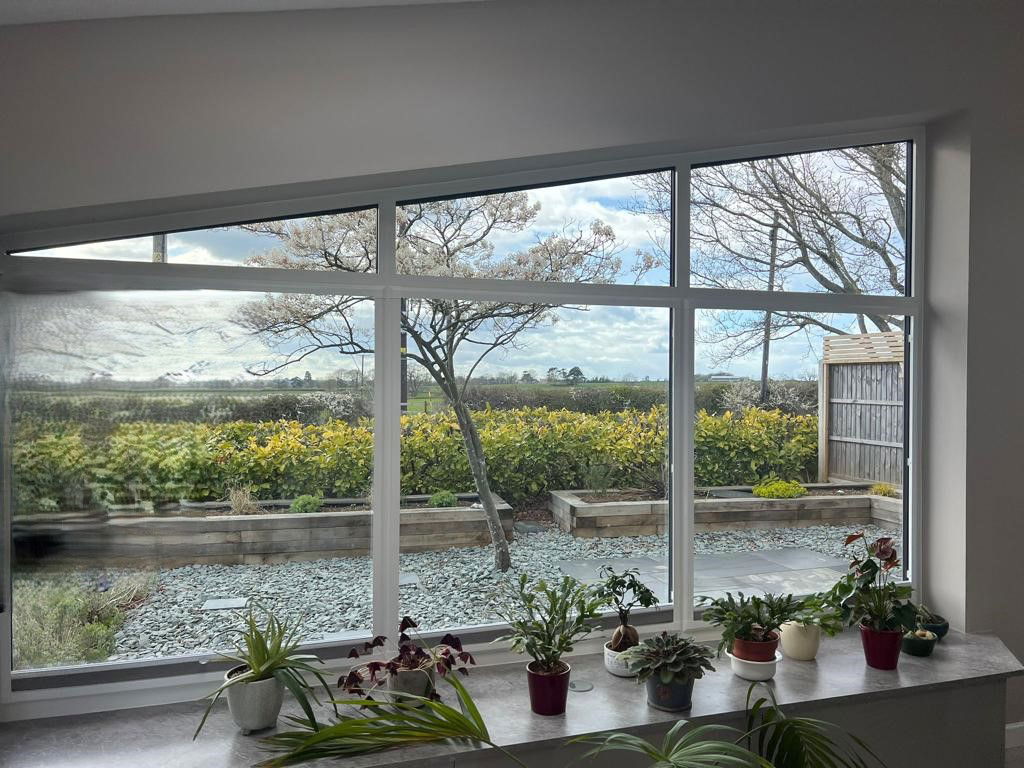Why Windows Are Key to Home Insulation

As winter approaches and temperatures drop, keeping your home warm and minimising energy costs becomes a top priority. While many of us focus on heating systems to maintain a cosy atmosphere, windows are often overlooked sources of heat loss. Fortunately, using blinds, shutters, and window insulation films strategically can make a substantial difference. These additions not only improve insulation but also reduce energy costs and contribute to a more sustainable home environment.
Why Windows Are Key to Home Insulation
Even with double-glazed windows, a significant amount of heat can escape through glass surfaces. According to research from the University of Salford’s Energy House Labs, certain types of blinds and shutters can reduce heat loss by up to 33%. Adding these elements to your windows creates a buffer that holds in warmth, reduces drafts, and helps maintain a consistent temperature indoors.
Types of Blinds and Shutters for Maximum Insulation
Different types of blinds and shutters offer varying levels of insulation. Here’s a breakdown of options, along with their effectiveness:
- Honeycomb Blackout Blinds in a Framed Bead / Perfect Fit System
Honeycomb or cellular blinds are designed with a cellular structure that traps air within each cell, creating an extra layer of insulation. In a framed bead or perfect-fit system, they reduce heat loss by up to 32%. These blinds are a great option for homeowners looking to add style while enhancing warmth. - Internal Plantation Shutters
These sturdy shutters offer insulation by reducing drafts and blocking heat loss. With heat loss reduction up to 28%, plantation shutters are both functional and stylish, forming a strong barrier when closed to trap heat inside your rooms. - Roller Blinds with Side Channels
Roller blinds with side channels, while not as effective as zipped side channels, still offer a close fit to reduce drafts. They can reduce heat loss by up to 22%, making them a practical choice to help retain warmth. - Standard Roller Blinds
Even standard roller blinds can reduce heat loss by up to 13%, adding a modest layer of insulation to your windows. Although not as effective as other options, they still contribute to energy savings and help maintain a cosy environment.
Enhancing Insulation with EnviroFilm Window Insulation Film
Beyond traditional blinds and shutters, an effective way to improve window insulation is by using EnviroFilm clear window insulation film. This transparent film applies directly to the interior of your window glass, creating a thermal barrier that traps warmth during winter and reflects heat in summer. EnviroFilm offers several benefits:
- Up to 66% Heat Retention in Winter: By installing EnviroFilm, you can reduce winter heat loss by up to 66%, which allows you to use your heating system less frequently and save on energy costs.
- 78% Heat Reflection in Summer: EnviroFilm reflects up to 78% of heat from the sun, keeping your home cooler during warmer months and reducing reliance on air conditioning.
- 82% Glare Reduction: This film cuts down glare by 82%, making it easier to enjoy natural light without harsh brightness.
- 99% UV Protection: EnviroFilm blocks 99% of UV rays, which not only helps prevent interior fading but also provides additional protection for your skin.
How to Use Blinds, Shutters, and Window Film for Optimal Warmth
- Let the Heat In During the Day
Open your blinds and shutters during the morning hours on sunny days to allow free solar energy to warm your rooms. Even in winter, natural sunlight can add a noticeable amount of warmth. - Keep the Heat In at Night
As soon as the sun sets, close your blinds and shutters to trap warmth and prevent heat from escaping through the windows. This creates an additional layer of insulation and keeps your home cozier as the night temperatures drop.
The Benefits of Insulating with Blinds, Shutters, and Window Films
Using a combination of window treatments and EnviroFilm insulation offers significant benefits for any homeowner:
- Lower Energy Bills: Effective insulation reduces the need to rely on heating systems, which lowers monthly energy costs.
- Environmental Impact: By consuming less energy, you reduce your carbon footprint, contributing to a more sustainable world.
- Enhanced Comfort: Properly insulated homes feel warmer and more comfortable, making it easier to enjoy time indoors without constant temperature fluctuations.